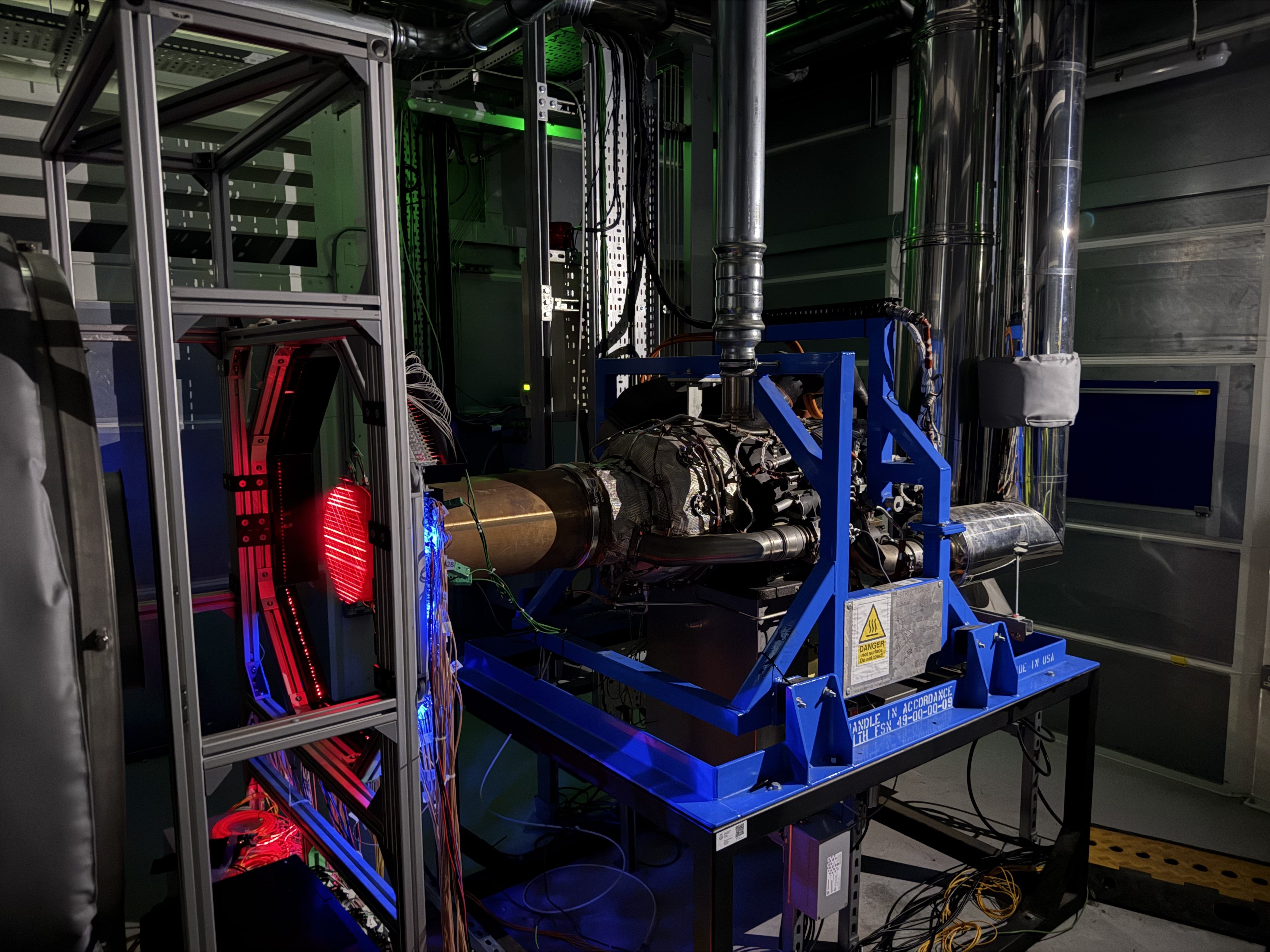
Our unique laser-based imaging solution produces real-time, two-dimensional temperature maps of gas-turbine exhaust plume, enabling rapid, early detection of propulsion system faults, such as overheating and thermal imbalance.
Its fast response reduces engine test durations from 30 minutes to just 5 minutes and cuts fuel consumption by up to 70%.
Application
Development Status
Commercial Offering
Opportunity
Aviation is under pressure to cut emissions and shift to Sustainable Aviation Fuel (SAF). A key challenge is monitoring gas turbine engine health accurately, especially across different fuels. Small faults like overheating often go unnoticed, leading to expensive repairs, wasted fuel, and higher emissions.
Current ground tests use thermocouples, which are slow, costly, and fuel-hungry. Each test takes 30 minutes, burns up to 1,000 litres of kerosene, and costs £500-£1,000. The cost is expected to rise 3-5 times with SAF adoption.
To overcome this, University of Edinburgh researchers have developed a new laser-based imaging system that provides real-time, high-resolution exhaust temperature maps in 5 minutes, cutting fuel use and test time by over 70% while improving engine health monitoring.

Technology Overview
The Edinburgh technology is centred on Laser Absorption Tomography (LAT), a laser-based imaging technology similar to a medical CT scan. that enables fast, non-intrusive diagnostics of gas turbine engine exhausts. LAT provides non-intrusive, high-resolution, two-dimensional temperature maps of gas turbine engine exhausts by measuring the molecular absorption of water vapour (H2O) - a common post-combustion product.
The Edinburgh LAT system is designed with robust optics and a fully integrated data acquisition (DAQ) platform, which withstands harsh engine test environments. Our software has been optimised for real-time signal processing and imaging.
Benefits
Publications
Liu, C. et al, A Modularized Chemical Species Tomography Sensor for Dynamic Imaging of Gas-Turbine Exhaust, Sensor. Actuator. B-Chem. 444, 138459 (2025).
Quote : TEC1104748

External Relations & Impact Manager SPADS CDT
Business Development Executive, School of Engineering